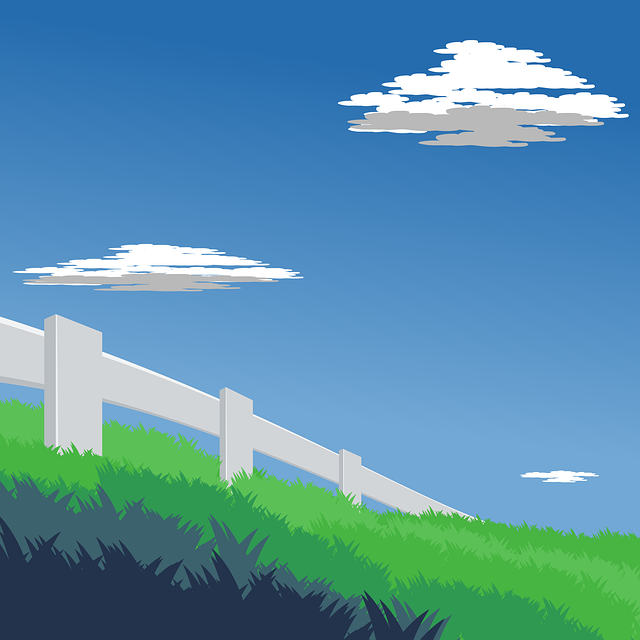Cost-Effective Fencing Solutions for Large Properties: Securing Your Space Without Breaking the Bank
Large properties present both opportunities and challenges when it comes to fencing. This article delves into practical, cost-effective solutions for securing expansive spaces, focusing on durable materials, thoughtful design, installation best practices, and creative approaches to overcome unique obstacles. We explore the benefits of DIY installation versus professional services, empowering you to make informed decisions that balance functionality, aesthetics, and budget. By the end, you’ll be equipped with the knowledge to transform your large property into a secure, beautifully fenced oasis without compromising your finances.
- Understanding Cost-Effective Fencing Needs for Large Properties
- Exploring Durable and Affordable Materials
- Designing Fences to Maximize Functionality and Aesthetics
- Installation Tips for Longevity and Low Maintenance
- Creative Solutions for Unique Property Challenges
- Benefits of DIY vs. Professional Fencing Installation
Understanding Cost-Effective Fencing Needs for Large Properties
Large properties present unique fencing challenges due to their extensive perimeters and diverse landscapes. A cost-effective solution must balance durability, security, and aesthetic appeal while considering the property’s specific needs. For instance, rural farms may require high, sturdy fences to contain livestock, while urban estates might seek more subtle, low-maintenance options that blend with surrounding landscapes.
Understanding these varying requirements is key to selecting suitable fencing materials and designs. Cost efficiency can be achieved through strategic planning, such as choosing durable yet affordable materials like vinyl or chain link fences, implementing creative layout strategies to minimize material use, and considering long-term maintenance and energy savings.
Exploring Durable and Affordable Materials
When it comes to fencing large properties, durability and affordability are key considerations. Exploring sustainable and cost-effective materials can transform your outdoor space without breaking the bank. Options like vinyl, wood treated with preservatives, or even recycled materials offer long-lasting solutions at various price points. These materials not only withstand harsh weather conditions but also maintain their aesthetics over time, providing a more economical alternative to traditional fencing options.
Additionally, innovative technologies have led to the development of composite fencing materials that combine the best of both worlds—the strength and durability of metal or concrete with the natural look of wood. These advanced materials are highly resistant to rot, rust, and pests, ensuring your fence remains in top condition for years to come. By choosing durable and affordable options, property owners can achieve both functionality and style while optimizing their budgeting efforts.
Designing Fences to Maximize Functionality and Aesthetics
When designing fences for large properties, it’s crucial to strike a balance between functionality and aesthetics. Fences should not only serve as physical boundaries but also enhance the overall look and feel of the space. Incorporating elements like custom designs, intricate patterns, or natural materials can transform a simple fence into an attractive feature that complements the property’s architecture and landscape.
Consider the layout of your property and the purposes the fence will serve. Will it need to provide privacy, security, or simply define different areas? Integrating these functional requirements into the design ensures both practicality and visual appeal. For instance, choosing a solid, tall fence for privacy and security while opting for a more open, lattice-style design in less private areas can create a harmonious blend of functionality and aesthetics.
Installation Tips for Longevity and Low Maintenance
When installing fencing for large properties, focusing on longevity and low maintenance ensures your investment lasts for years to come. One key tip is to ensure proper drainage around the fence line. This prevents waterlogging, which can weaken the fence over time. Incorporating a slight slope in the terrain or installing drainage channels can help manage excess water effectively.
Regular cleaning is another vital step. Remove leaves, debris, and any vegetation that could hinder airflow, as this encourages rot and corrosion. A light pressure wash every few months will keep your fence looking fresh. Additionally, using high-quality materials, such as treated wood or durable vinyl, can significantly reduce maintenance needs, ensuring your fencing solution remains in top condition with minimal effort.
Creative Solutions for Unique Property Challenges
When it comes to large properties, one-size-fits-all fencing solutions often fall short. Creative approaches are essential to tackle the unique challenges that come with expansive landscapes. For instance, on hilly terrain, custom-designed curved fences can follow the natural contours, providing both aesthetic appeal and functional security. Alternatively, for vast open spaces, a mix of taller, solid panels and lower, decorative railings can create visual interest while still offering adequate privacy.
Additionally, integrating existing features like trees, rock formations, or body of water into the fence design can enhance the overall look and feel of the property. Customized solutions not only address practical needs but also contribute to the distinct character of the land, ensuring that the fencing blends seamlessly with the surrounding environment.
Benefits of DIY vs. Professional Fencing Installation
DIY fencing installation offers several advantages for those with large properties seeking cost-effective solutions. One of the primary benefits is the potential for significant savings. By taking on the project yourself, you eliminate the expense of hiring professionals, which can be particularly beneficial for extensive fence projects. Homeowners can source materials at their own convenience and often at lower costs compared to contractors’ supplies. This approach empowers individuals to work at their own pace, without the pressure of deadlines, and allows for more creative control over the fence’s design and customization.
While DIY installation is appealing, it’s essential to consider the time commitment and potential challenges. Larger properties may require substantial labor, and the learning curve for installing fencing can be steep, especially for complex designs. On the other hand, professional installers bring expertise, ensuring proper measurements, post placement, and rail alignment, resulting in a more structured and durable fence. They also handle necessary permits and adhere to local building codes, saving homeowners potential headaches and legal issues.
